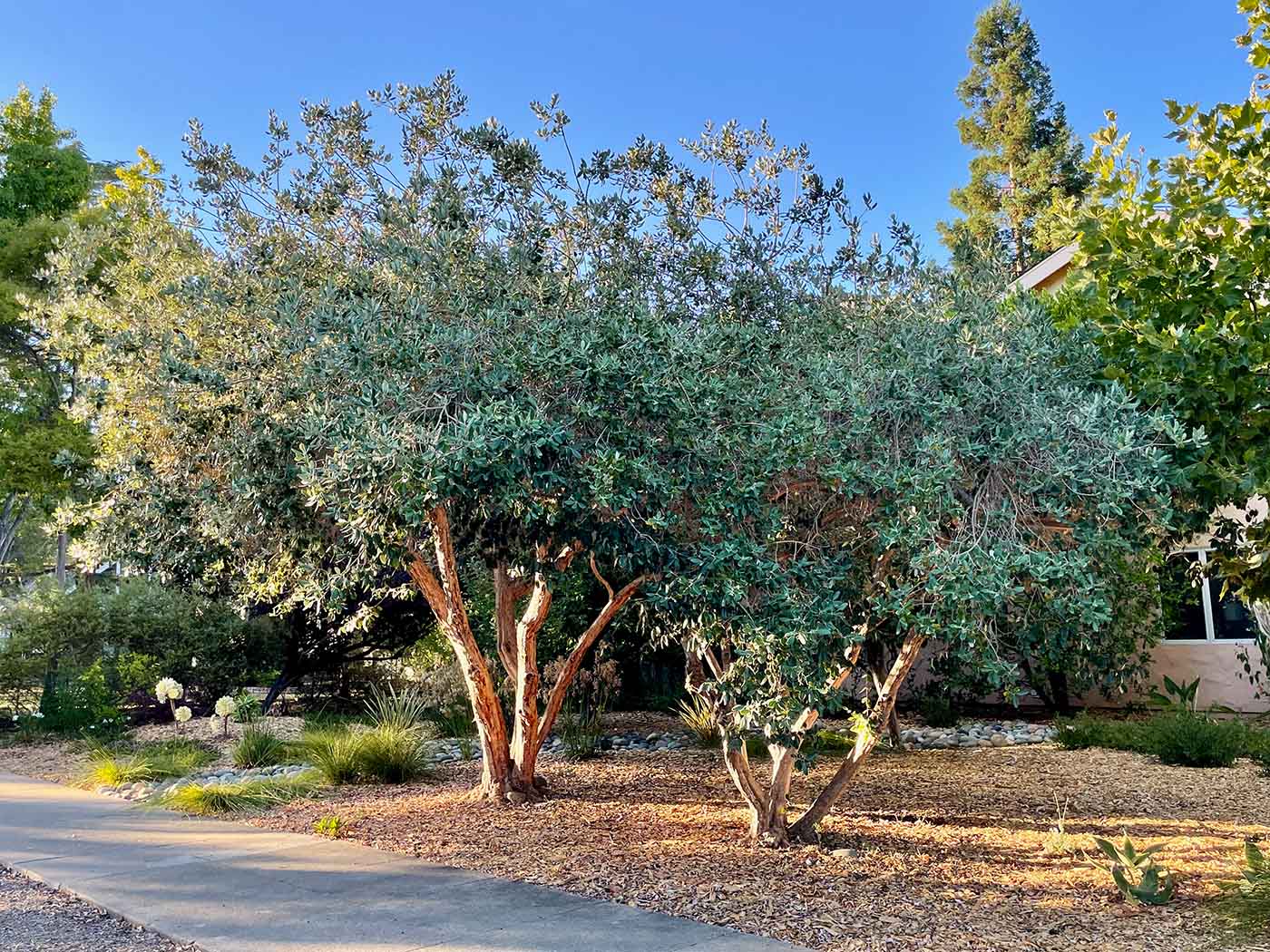Feijoa sellowiana
 pineapple guava
pineapple guava
This rather striking small tree or large shrub exhibits two contrasting tones of green, being silvery underneath the leaves, and in late spring adds an accent of bright flowers. The flower gets its effect from its bunch of long stiff red stamens as also do the related eucalypts, which have learned to dispense entirely with petals as a means of attracting pollinators. In the case of feijoa, the red and white petals are sweetly succulent and may be eaten.
Later in the fall the gray-green oval pineapple-flavored fruits ripen. There are many on campus, including two about 12 feet tall at 691 Salvatierra Street, and a tall one at 743 Cooksey Lane. Several can be seen at Rains Houses on each side of the Hacienda Commons. Others are pruned as hedges along the north and south fronts of Stern Hall and also at the Bing Nursery School.
The time to locate them by their flowers is early June. To get ripe fruit, pick it up from the ground, or shake the tree. Even then you may need to keep the fruit on a sunny window-sill before eating it. Squirrels do not have the necessary patience and sometimes leave prematurely picked fruit on top of a fence. Feijoas are rich in vitamin C and make a good addition to a fruit salad. The plant was named for da Silva Feijo, an 18th century Spanish naturalist.

Illustrations: flower | branchlet and fruit | fruit.
Name derivation: Acca: Peruvian name; Feijoa – da Silva Feijo, an 18th century Spanish naturalist; sellowiana – Friedrich Sellow (1789–1831), German botanist who collected in South America.
About this Entry: The main text of this entry is from the book Trees of Stanford and Environs, by Ronald Bracewell, published 2005. Minor edits; corrected Salvatierra address; removed reference to Rogers House hedge (the house was moved); genus name had changed to Acca but has now returned to Feijoa (Jan 2024, SP).





